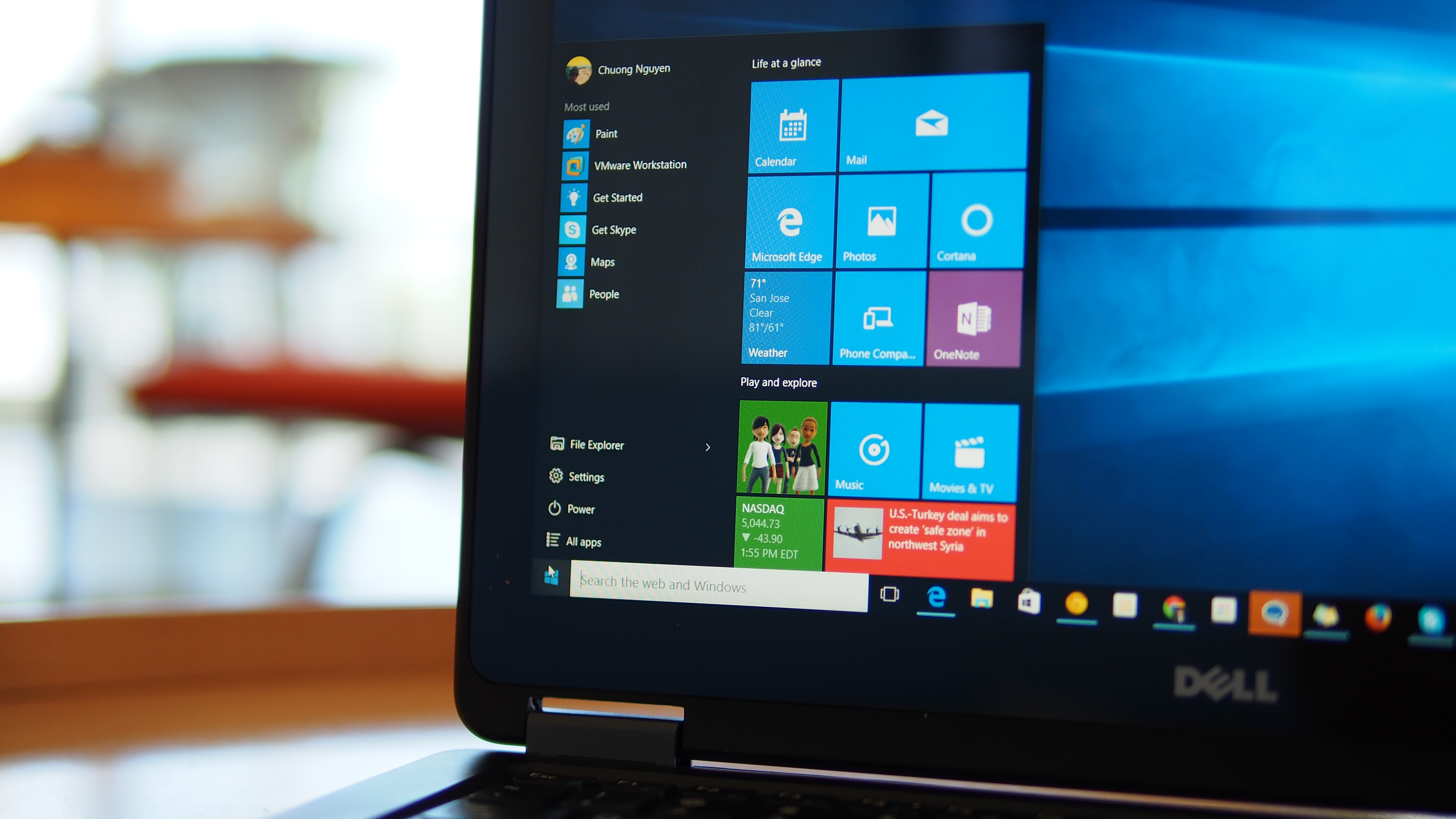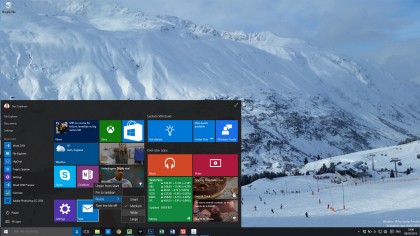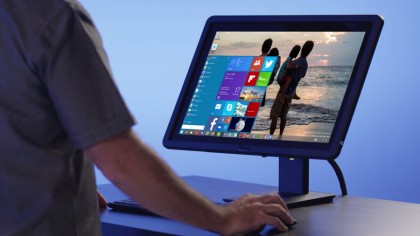Windows 10: everything we know so far
The future of Windows has arrived

Update: As of this writing, Windows 10 has been installed on a whopping 18.5 million devices, according to Neowin, debunking previous reports of download figures in the range of 67 million. Regardless, 18.5 million is no small number, and is likely only to grow from here. The question is: by how much and how quickly?
And in case you've been living in a cave, the verdict is in: "Windows 10 is the new Windows 7." Read our full Windows 10 review right now.
Finally, if you want the highlights surrounding Microsoft's big launch straight away, then just head to the "Latest developments" section at the end of this page.
Original article follows...
This is it, the dramatic climax to what Microsoft set out to do for computers over four years ago: Windows 10. The Redmond, Wash.-based firm's first attempt to smooth over the inevitable collision of laptops and tablets, Windows 8, ended in what's widely regarded as a flop. (And Windows 8.1 helped, but not much.)
But this time, things are different. Despite learning it the hard way, Microsoft has clearly gathered crucial feedback over the short lifespan of Windows 8 and turned it into what might be the firm's most well-equipped piece of software yet.
Over the past nine months since its reveal, Microsoft cranked the proverbial feedback faucet and broke the handle in one of the most public software development phases to date, period: the Windows Insider Program. In fact, it's still going on and will continue well past the general release for Windows 10. You can join up right here – 5 million have as of July 2.
Are you a pro? Subscribe to our newsletter
Sign up to the TechRadar Pro newsletter to get all the top news, opinion, features and guidance your business needs to succeed!
Between that and several public events hyping the new operating system (OS) over the past year, Windows 10 has grown right before our very eyes. And now, Microsoft's refined vision for the future of computing is prime for picking. In fact, until July 28 2016, Windows 10 is free for those upgrading from Windows 7 or Windows 8 devices.
Without further ado, here's everything you need to know about Windows 10.
Cut to the chase
- What is it? A complete update for Windows
- When is it out? Upgrades are seeding out now – read the details below!
- What will it cost? If you're on Windows 7 or 8.1 now, the upgrades is free for one year
When is the Windows 10 release date?
Microsoft slated Windows 10 for a summer launch, and the company has stuck to its word. Following several leaks (and one giant snafu from retailer NewEgg) and a confirmation of its own, the OS launched in 190 countries on July 29.
That said, Windows 10 did not release for all device types on this date. Judging from comments made by Microsoft Corporate VP of Operating Systems Joe Belfiore, the company has planned a phased approach to the launch. Windows 10 will release for desktop, laptop and tablet devices first, then trickle down to phones, the Xbox One, Arduino machines and its own HoloLens.
Furthermore, Windows 10 launched on July 29 through the direct upgrade program and first to the 5 million-plus Insider Preview testers. It wasn't until after then that the general public started receiving their reserved free upgrades.
If you're looking to pick up a Windows 10 install on a flash drive (Microsoft's method of choice for physical copies), these drives are available at retailers, like the Microsoft Store, immediately. (You could also pre-order your install drive and hope it arrives at your door on its recorded August 30 ship date, according to Amazon.)
Finally, if you just can't wait, you can purchase a product key and download the OS starting on July 30. These latter two routes you'll have to take if you're not eligible for the free upgrade or want an additional copy. (More on that below.)

How much does Windows 10 cost?
For current Windows 7 and 8.1 users, Windows 10 upgrades downloaded directly from Microsoft will be free for one year, Microsoft's EVP of Operating Systems Terry Myerson announced in January. After that period – for both product keys and standalone copies of the OS sold on those flash drives – the asking price starts at $119.
Not currently running a genuine version of Windows 7 or 8.1? Then the ticket to ride starts at $119 (£99, about AU$156).
If you're not eligible for Microsoft's free upgrade program – say you're running a non-genuine Windows version or one older than Windows 7 – Windows 10 Home will cost $119 (£99, €135, about AU$156) and Windows 10 Pro will cost $199 (about £131, €178, AU$262) per license, Microsoft confirmed to TechRadar.
Windows 10 Home users who want to upgrade to Pro will have to pay an additional $99 (about £65, €88, AU$130) for the Windows 10 Pro pack. Unfortunately, Microsoft has been mum on exact Pro pricing for the UK and EU, while nothing has been said of exact Australian pricing.
Neowin reported back in February that Microsoft has trademarked the term "Windows 365," supposedly with the intent of it being a service. The news and speculation has sent folks buzzing about the possibility of a subscription-based Windows service to come, though that's not likely to be Windows 10.

How can I upgrade to Windows 10?
Confirming the rumors and leaks leading up, Microsoft started the upgrade process for current Windows 7 and Windows 8.1 users weeks ago. If your machine is up-to-date, you should see a small icon of the Windows logo on your taskbar next to the internet status icon.
Clicking it opens a window that details the upgrade process and will allow you to "reserve" your free Windows 10 download by providing your email address. Presumably on – or in advance of, if you were lucky – launch day, Microsoft initiated the OS download to your device and will notify you when it's ready to install.
If your version of Windows 7 or 8.1 is up to date, then your free Windows 10 upgrade is just a few clicks away.
What follows that prompt are a few bits of info to tease the new release and get users excited. It's that easy.
If you're at all confused about which Windows 10 version you'll get, just look at which Windows 7 or 8.1 version you're using now. That's the equivalent Windows 10 version you'll receive: e.g. Windows 8.1 Home users will only be able to upgrade to Windows 10 Home.
Better yet, Microsoft recently revealed through its most recent Insider Preview build that anyone who downloads and installs the Windows 10 upgrade has one month exactly to decide whether it's a fit for them. If not, you will be able to revert back to Windows 8.1 or 7 with little trouble – just mind the date.
Plus, the company promises that it will support both free upgrades and purchases of Windows 10 with security and system updates "for the lifetime of those Windows devices."
Microsoft recently clarified that statement with specific figures: Windows 10 will be supported with new features and updates until October 13, 2020. Extended support, e.g. security patches, will carry on until October 14, 2025. This seems to apply to both Windows 10 on desktop and Windows 10 Mobile.
Further updates are in the works (already)
Before Windows 10 has even launched, some of Microsoft's upgrade plans for the OS have leaked. Most recently, Neowin reports that Wave 2 of Threshold, the long-standing codename for Windows 10, will land this October.
However, this update will reportedly focus on optimizing and stabilizing the operating system. If you're already holding out for some major changes, or what's missing from the initial release, expect to hold your breath for a bit longer.
According to an earlier Neowin report, the first major Windows 10 update will come June 2016 and the second in October of next year, with Microsoft operating under the codename Redstone. That said, I would expect that timing to change. A whopping 11 months is quite a long time before issuing features that were cut from the initial Windows 10 release.
What's new in the Windows Insider Preview?
The latest public preview build available for all testers is build #10240, released about three weeks ago as of this writing. This update has been marked by Microsoft as RTM, or Release To Manufacturer, meaning that this is the build of Windows 10 that will come loaded on every new laptop and PC running the OS released this summer.
The most notable feature you can expect to find in the latest build is the nearly-final version of Edge, Microsoft's new web browser. The new browser was teased ad nauseum at the company's Build 2015 event, and we've even gone hands on with Microsoft Edge.
The Windows Insider Preview won't end on July 29, but if you want your OS to remain a genuine copy, you'll have to keep installing the pre-release updates.
So, your chance to test an even more recent version of Edge than we did a few months back has finally come. However, one Edge feature that is not yet available is extension support – this will come in a sizable autumn update.
Other updates coming through in build #10240 are upgrades for Cortana, now able to compose and send emails following your dictation and train to your voice specifically. The Photos app has been further upgraded to now support GIFs, too. There's a vast list of smaller updates and improvements that can be found here.
Finally, Microsoft detailed what will happen for those that installed the Windows 10 Insider Preview directly on top of Windows 7 or 8.1: not too much. If this is how you installed the preview, you'll just keep receiving the updates as normal and, come July 29, you'll have the same version of Windows 10 as everyone else – but there's a catch.
Regardless of whether the "final" version of Windows 10 is available, Insiders must continue to receive preview updates – which will not stop after July 29 – for their copy of Windows to remain genuine. If you want to opt out of the preview, you'll have to restore back to your previous version of Windows 7 or 8.1 and perform a clean Windows 10 install from there.
At least that's the current company line. My Insider Preview install of Windows 10 Pro on a Surface Pro 3 has seemingly been converted to the public release version of Windows 10 Pro. We've reached out to Microsoft for comment on this.
Latest developments from the launch
Windows 10 is well into its launch, so here's everything that's happening surrounding the global release of the operating system – from manufacturer announcements to juicy quotes and info.
Solitaire in Windows 10 tries to be a money maker – Solitaire is arguably the most popular PC game of all time, and Microsoft knows that. In fact, the firm seems to think it's sitting on a veritable cash cow. In Windows 10, you'll have to pony up $1.49 a month (or $10 annually) to get rid of some banner ads in the game window as well as unlock special features. Bummer.
Having issues installing the thing? – Scores of hopeful Windows 10 users have cried havoc over install problems with the free upgrade. But no longer! We have a guide that should help you get around those issues right here.
Windows 10 Mobile could land as late as November – During a Windows 10 launch party in South Africa, a Microsoft executive reportedly let slip that the mobile version of the new OS is slated for release in the "November timeframe."
The Windows 10 ISO files are here – Can't wait for your free upgrade to start downloading already? The Redmond crew has finally released the 32- and 64-bit ISO files for free, though you'll need an up-to-date, genuine (as in, you paid for it) copy of Windows 7 or 8.1 to run them.
Windows 10 PCs are already available – Dell has announced a number of Windows 10-packing devices that are shipping right now, namely its Inspiron line of laptops. HP did the same, offering up its flagship Spectre x360 and Envy x360 laptops with the OS starting now. Not to mention that Acer and Lenovo have both committed to the Windows 10 launch with products shipping with the interface now.
Move on to the next page to read about the coolest features coming to Windows 10 in depth.
Joe Osborne is the Senior Technology Editor at Insider Inc. His role is to leads the technology coverage team for the Business Insider Shopping team, facilitating expert reviews, comprehensive buying guides, snap deals news and more. Previously, Joe was TechRadar's US computing editor, leading reviews of everything from gaming PCs to internal components and accessories. In his spare time, Joe is a renowned Dungeons and Dragons dungeon master – and arguably the nicest man in tech.
